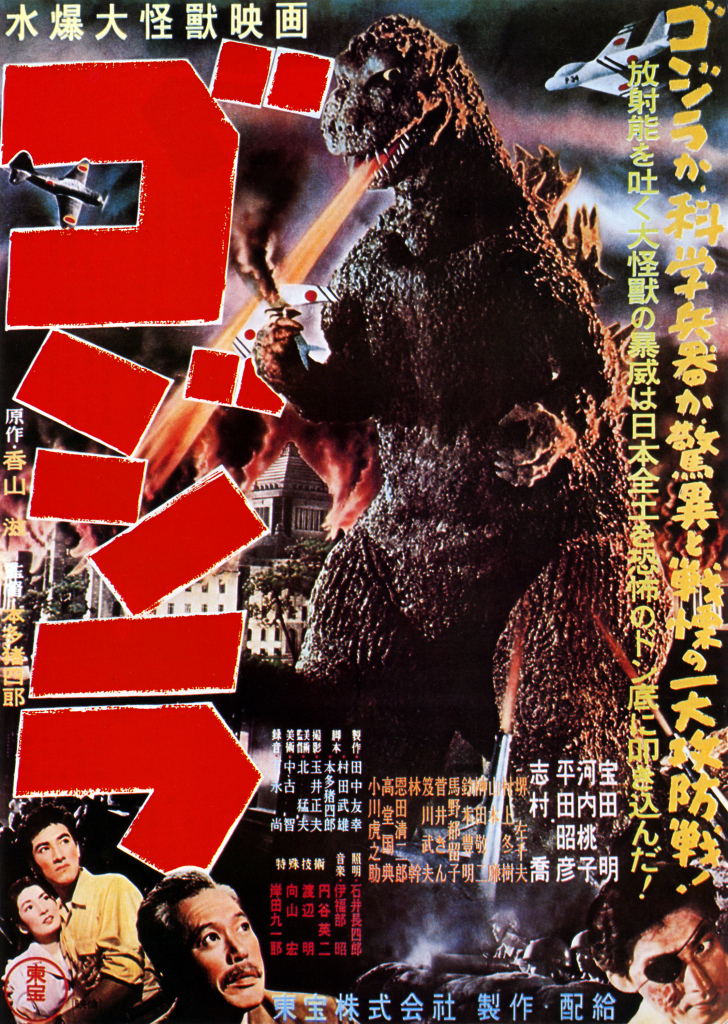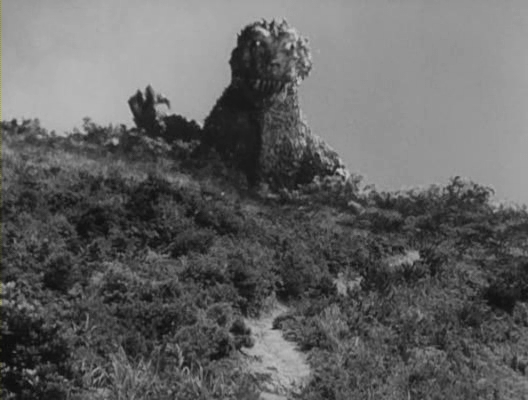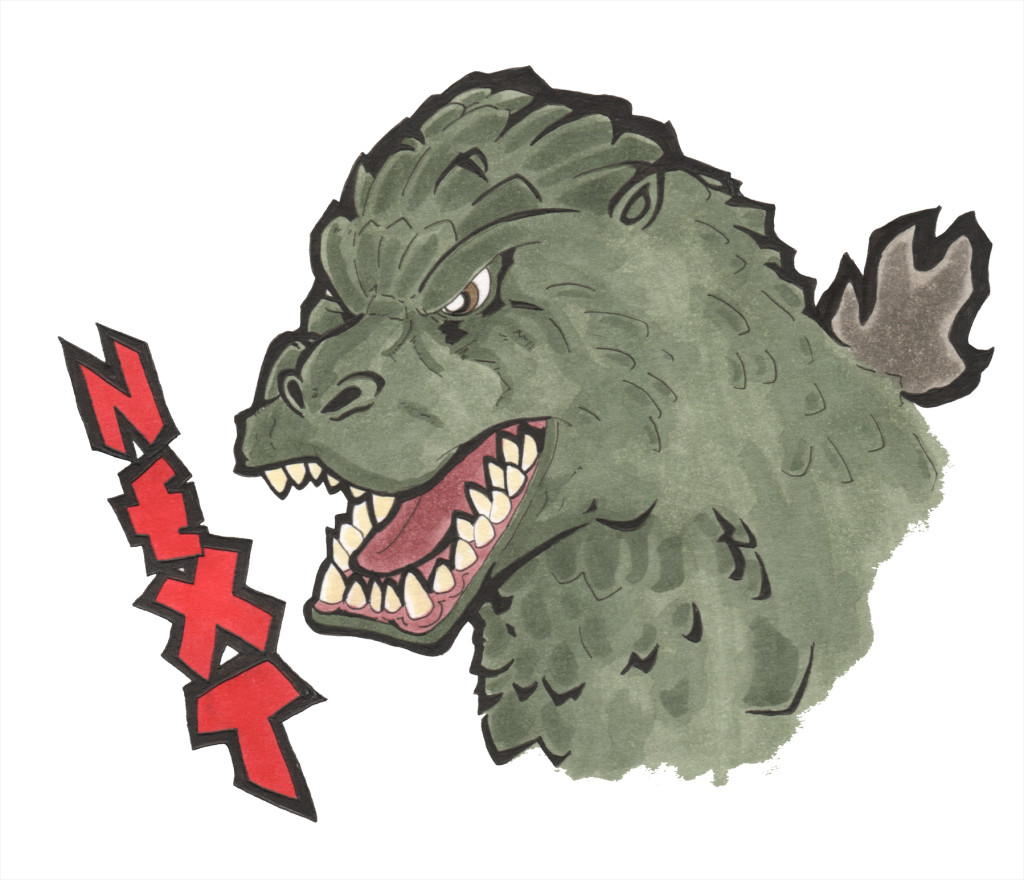Gojira ~ 1954, Ishiro Honda – Japan

As a Westerner, by the time I had finally seen the original Japanese Gojira, I had already seen the Perry Masonified American version dozens of times. I had long been aware that the Japanese version was considered much better, but I was unprepared for just how much better it really was. I finally saw the original, Raymond Burr-less version about seven years ago, and while Godzilla: King of the Monsters is a sturdy, enjoyable monster classic on the level of Dracula or The Wolf Man, Gojira is a masterpiece, better compared to German Expressionist horror like Nosferatu or The Cabinet of Dr. Caligari. This shit’s off the chain.
The plot centers around mysterious phenomena occurring in and around Japan, the results of which leave many dead, and have Japan’s top minds speculating without much to go on. The film lingers in tense ambiguity for a lot longer than it’s American twin, and when Godzilla is finally revealed to be the cause of these strange occurrences, it remains some time until everybody is on the same page regarding not only his existence, but also what to do about it. Plus, when he first shows up, Godzilla looks a lot like Triumph the Insult Comic Dog.
 “Hey, Japan- your country looks really great!… FOR ME TO POOP ON!”
“Hey, Japan- your country looks really great!… FOR ME TO POOP ON!”
There are also multiple human characters we actually care about in this movie, including Emiko and Ogata, two young lovers who face considerable challenges in pursuing a relationship with one another. Firstly, Emiko is already engaged via an arranged marriage to a brilliant, but reclusive scientist named Dr. Serizawa. Emiko does not want to marry Serizawa, but we definitely do not get the impression that he is at all a bad man. Additionally, Emiko’s father, Dr. Yamane, is at odds with Ogata, who feels that Godzilla should be destroyed. Yamane believes the monster to be far too valuable to science, and this disagreement between the two puts further strain on Emiko and Ogata’s relationship. Their romance is actually the heart of the picture, but in the American version it is minimized to such a severe degree that the film loses it’s emotional anchor completely. Presumably, the addition of Raymond Burr in the American cut was done in an attempt to give Western audiences someone to relate to, but it creates an enormous amount of separation from the film’s drama, and I think this is a mortal wound to the picture which downgrades it from an artfully crafted allegory to an easily dismissed B-movie. Burr feels far too safe, even when he’s crawling out of rubble, and he has no investment in the lives of the people around him, so neither do we. Like looking through a window at a storm, the American version has taken all of the bite out of the picture, where the Japanese version feels much more like being the person locked out in the wind and the rain, we feel the misery and the fear much more effectively.
Throughout Gojira, Godzilla’s status as a metaphor for atomic warfare and the ramifications thereof are well solidified, and the film takes this topic seriously. It adds a great deal of weight to the film, this is a tense, gloomy picture that is lightyears from the goofy, fun-time monster slugfests we’d see out of Godzilla in the 60’s and 70’s. By 1954 standards, this shit is actually kinda scary. The photography is very high contrast, we see Godzilla’s fury in thick, jet blacks and flat whites, like the cover of a Darkthrone album, it exudes gloom and discomfort, and the movie really goes the distance in exposing the viewer to human casualties. In watching Gojira, it’s hard to disassociate the film’s proceedings with the historical events that they are meant to represent, so these civilian deaths are not easily shrugged off. This truly is no fun monster romp, Gojira feels like a movie about the horror of atomic war that just happens to use a monster to tell its story, which is exactly what it is, and because of how well this is done, and because of how direct this metaphor is, I think there is a strong case to be made for Godzilla being the single greatest Fictional monster created since Dracula. The book… Not the movie.
The multifaceted discussion on the topic of atomic war in the film feels very stark, but not preachy. Gojira doesn’t so much as all out demonize atomic war, as much as it just sort of lays it out there and says “This is what happens, and what happens is terrible.” And that’s the major question of our age, the term “mutually assured destruction” is now a part of our lexicon. It’s now very plausible that all life on the Earth could be snuffed out due to the actions of mankind. In the battle of Man VS Nature, we’ve finally got Earth in Checkmate. So, what does that mean, philosophically? Gojira digs into that. Is Gojira the most valid cinematic exploration of these ideas? I don’t know, but I know one thing, on that topic, this is Japan’s two cents, and they know a thing or two about nuclear war. It’s my belief that in the same way Frankenstein’s Monster was a means of exploring hubris in an age when mankind overstepping his bounds was hot in the zeitgeist, Gojira digs into a seminal cold war issue in a way no other horror film can lay claim to, and in so doing has earned a poignancy quickly abandoned by it’s sequels, but still very much worthy of appreciation. This makes Gojira an important movie.
On top of that, it’s also completely enjoyable as an out of context, classic monster flick, so I think it’s reasonable to expect this film to still pack a punch for younger generations upon whom the historical allegory is lost… As a horror film, a science fiction film, and a monster movie, Gojira belongs seated comfortably in a place reserved for the very best.
A+


Great review!
I had the same reaction when I saw the original “Gojira” for the first time.
It’s an entirely, much more serious, film. And it still packs an emotional punch after all these years. Not only in the horrific destruction, but also in the emotional trauma the characters go through.
While I think the atomic bomb aspects play a large part in the Gojira mythos, there’s so much more going on underneath.
In March of 1945, the Allies dropped 2000 tons of incendiary bombs on Tokyo, wiping out huge parts of the city and killing over 100,000 people.
Previously, over 100,000 Japanese soldiers and almost 150,000 civilians died in the 2 1/2 months of the battle of Okinawa.
In 1945, Japan was waiting for a huge, unstoppable, fire-breathing monster to come ashore and wipe them out. You could argue that Gojira is a symbol of the invasion that never happened.
Gojira is more than just an allegory for nuclear war. I see it as Japan’s coming to terms with ALL the horrors of World War II. The horrors that they went through, and a way to imagine the horrors that their victims suffered as well. If I remember correctly, in one of the films Gojira is described as divine retribution for Japanese war crimes.
Either way, it’s a helluva movie. Gojira is one of the greatest movie monsters of all time. We may not feel any sympathy for Gojira, like we do for, say, the Wolfman or Frankenstein’s Monster, but we damn sure better fear and respect this unstoppable result of man’s misguided attempts to mess with nature.
Good job, amazing response! Now go comment on all my other reviews with equal insight and Eloquence. You can’t give me anything, I just use it as leverage to try and get more out of you.
I love this please keep up the good work!!!
Thank you! And I will… And already did! But also will continue to. And am currently also doing that as we speak.